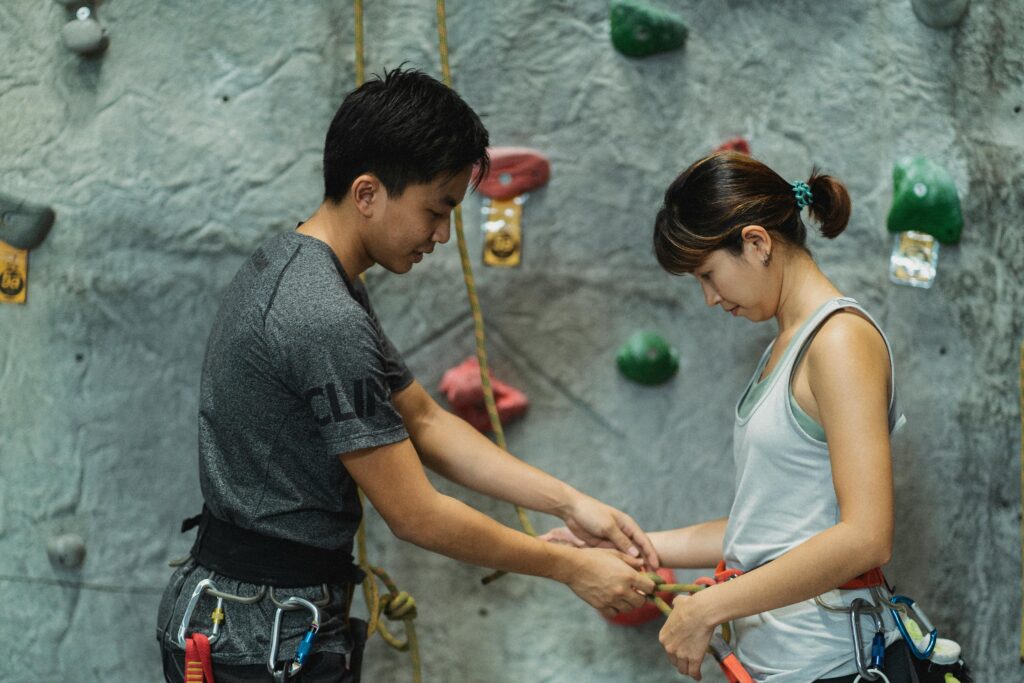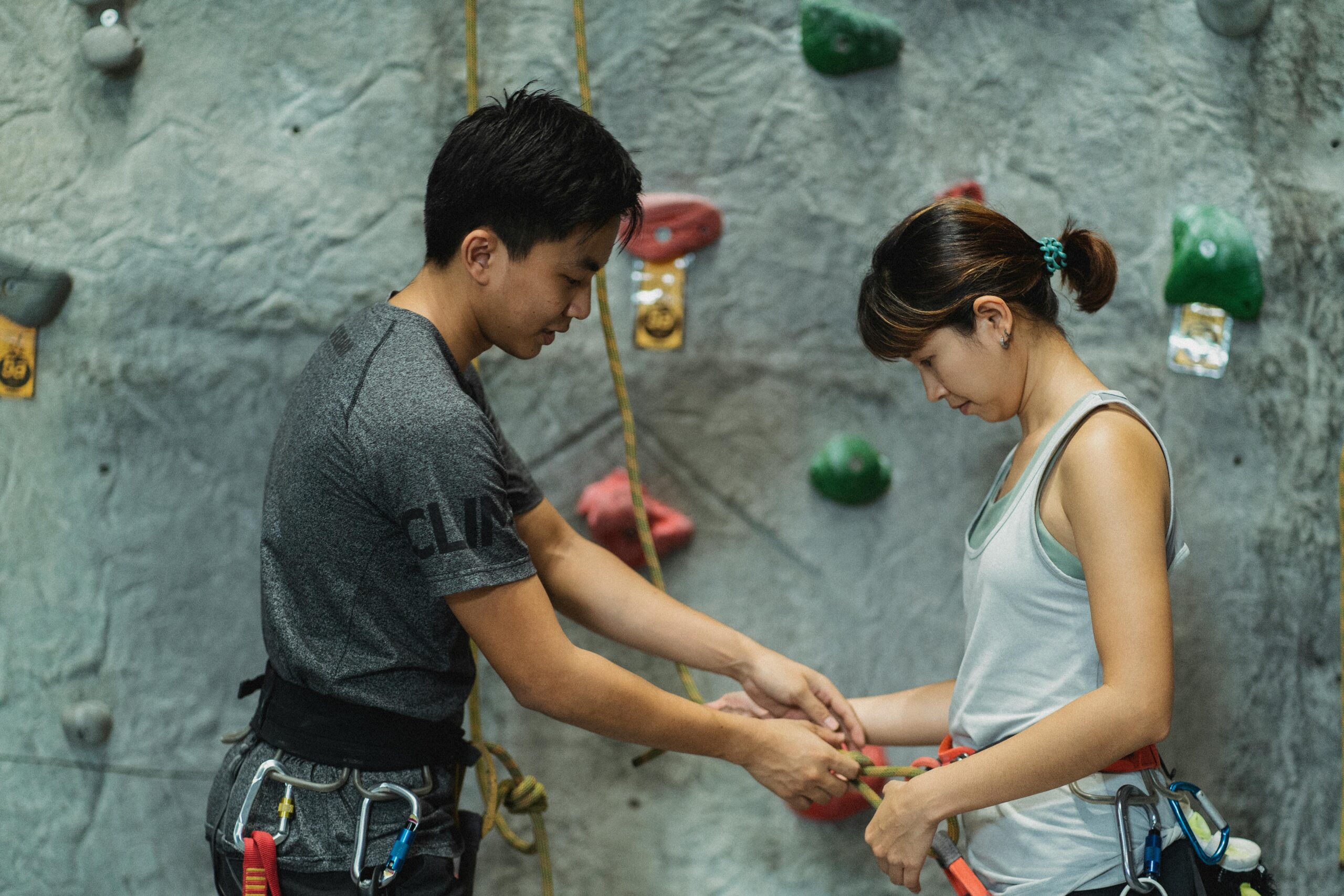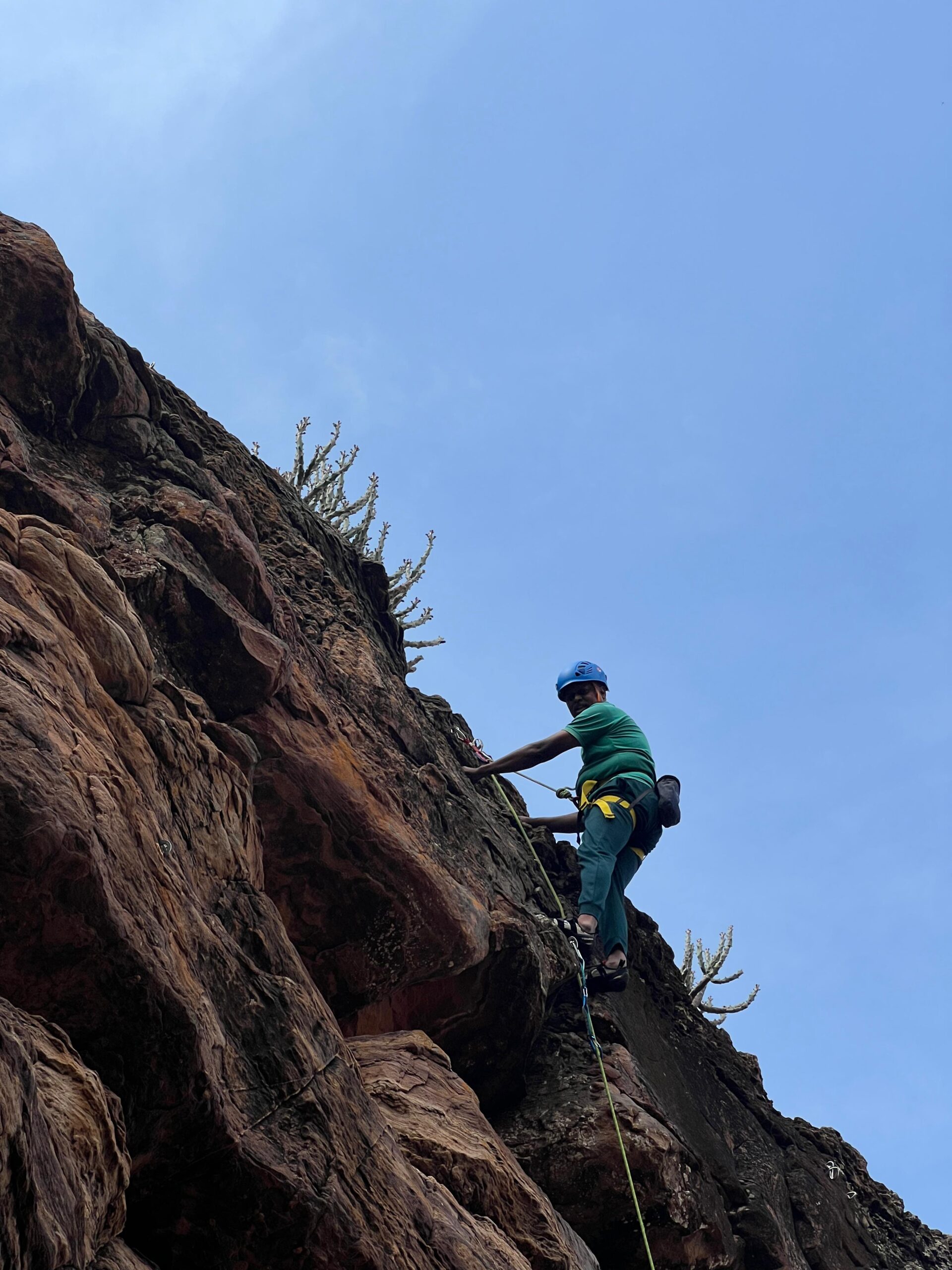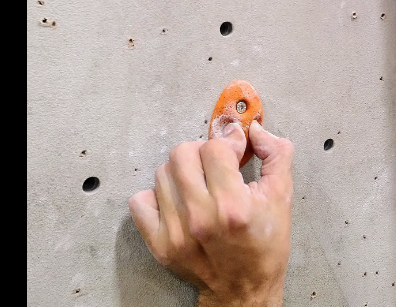Standard RockClimbing Commands with Safety and Buddy Checks
Effective communication between the climber and belayer is crucial for safety during a climb. Here are the standard commands, incorporating a safety and buddy check before starting. This example involves a female belayer and a male climber.
Pre-Climb Safety and Buddy Check
- Climber and Belayer: Perform a safety check together.
- Verify harnesses are properly secured.
- Check the rope is properly tied (climber’s knot and belayer’s setup in the belay device).
- Inspect the anchor and belay system for security.
- Confirm helmets are properly worn.
- Buddy Check: Verbally confirm readiness.
- Climber: “Harness secure?”
- Belayer: “Secure. Belay device locked?”
- Climber: “Locked. Ready to climb?”
- Belayer: “Ready. Let’s go!”

Standard Commands During the Climb
Start of the Climb
- Climber: “That’s me!”
The climber signals that all slack has been taken out, and the rope is snug. - Belayer: “Belay on!”
The belayer confirms she is anchored and ready to belay. - Climber: “Climbing!”
The climber signals he is starting to climb. - Belayer: “Climb on!”
The belayer confirms readiness.
During the Climb
- Climber: “Slack!”
Requests extra rope for a move or to dismantle an anchor. - Climber: “Up rope!”
Asks the belayer to take in slack. - Climber: “Watch me!” or “Tension!”
Signals the belayer to prepare for a possible fall or to hold the rope snug. - Climber: “Falling!”
Warns the belayer of an imminent fall. The belayer should lock off the rope and brace for the impact. - Belayer: “Halfway!”
Informs the climber that half the rope length has been used. - Belayer: “Feet [number]!” (e.g., “Feet three-oh!”)
Announces how much rope remains for the climber.
At the Anchor
- Climber: “Off belay!”
Signals that the climber is anchored in and no longer requires belay. - Belayer: “Belay off!”
Confirms the rope has been removed from the belay device.
Additional Situations
- Climber (Rappeller): “On rappel!”
Warns those below to clear the area of loose rock or prepare to assist. - Top of Cliff: “Rope!”
Announced before tossing a rope for rappel or top-rope setup. - Falling Rock: “Rock!”
Repeatedly shouted to warn others of falling debris. - Climber in Gym: “Take!”
Requests the belayer to take the climber’s weight and prepare for lowering.
When Verbal Communication is Difficult
- Use names to avoid confusion with nearby teams (e.g., “Anne, up rope!”).
- Agree on rope tugs as non-verbal signals:
- Example: One tug = “Take slack,” two tugs = “Off belay.”
- Use 2-way radios in noisy or windy conditions for clear communication.
Final Tip
Always establish your communication system with your climbing partner before leaving the ground. Clear, consistent commands save lives and ensure a safe, enjoyable climb.


